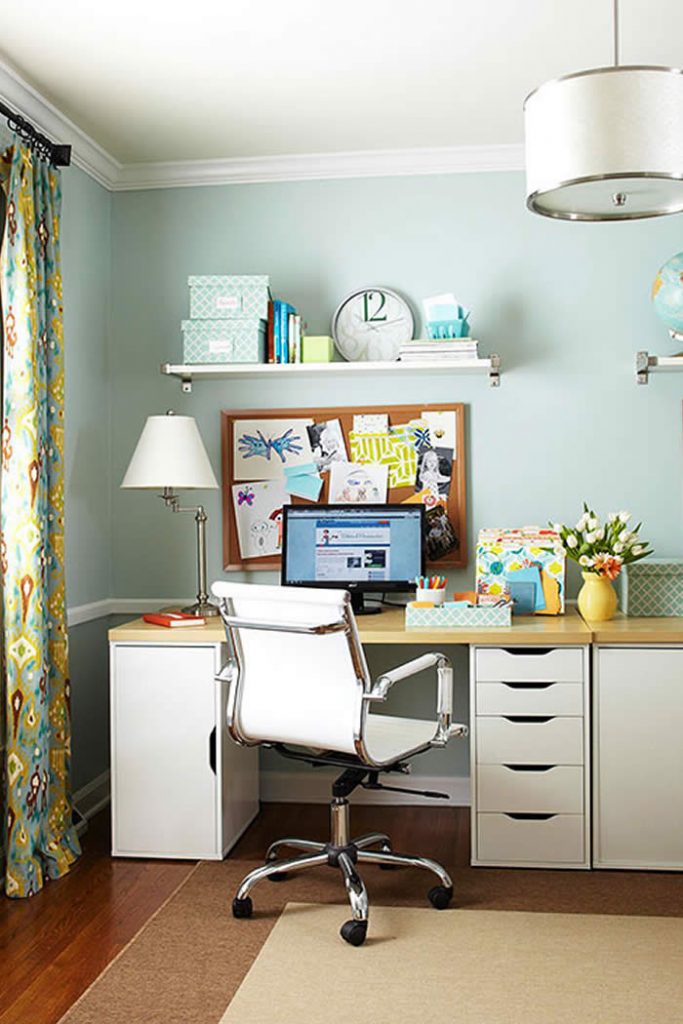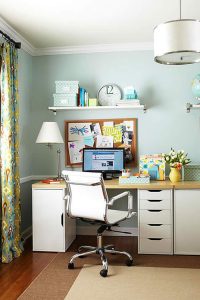While the tendency to clutter your corporate office desk with stray papers and food wrappers is easy, imagine adding bills, letters, junk mail, kids toys and, you never know, even a cat to the mix. This is the reality of working from home. Sadly not everyone has the luxury of knocking through walls to create a vast home office. You get just one room in the family home and, often, not a very big one at that. This makes keeping the space clutter free even more important. A messy environment creates a messy mind and can turn your professional sanctuary into a disordered space where you struggle to boost your output. There are, however, ten very simple things you can do to create more space in your home office in no time at all.
1) Get a space-efficient desk
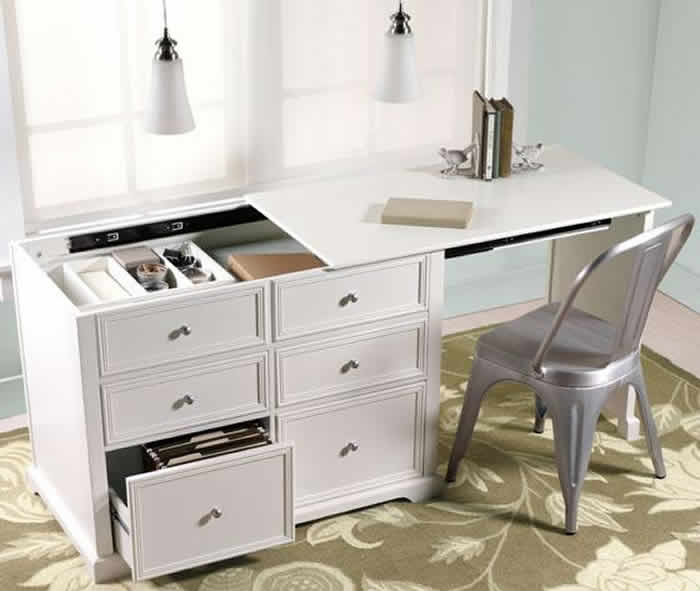
One of the things I notice in more disordered home offices is the size and state of the desks inside them. Often intentionally too big for the room so an abundance of papers, documents and other items can be stored alongside a computer and keyboard, they can quickly sap up any spare space. Smaller desks don’t have to mean less space though, especially if you buy one that incorporates a roll-out shelf for your keyboard and mouse, storage drawers and room underneath for a bin and/or paper shredder. Not only will all of your essentials still be in one place, but stored safely away from the main hub of your desk and organised into their own unimposing spaces.
2) Switch to a laptop
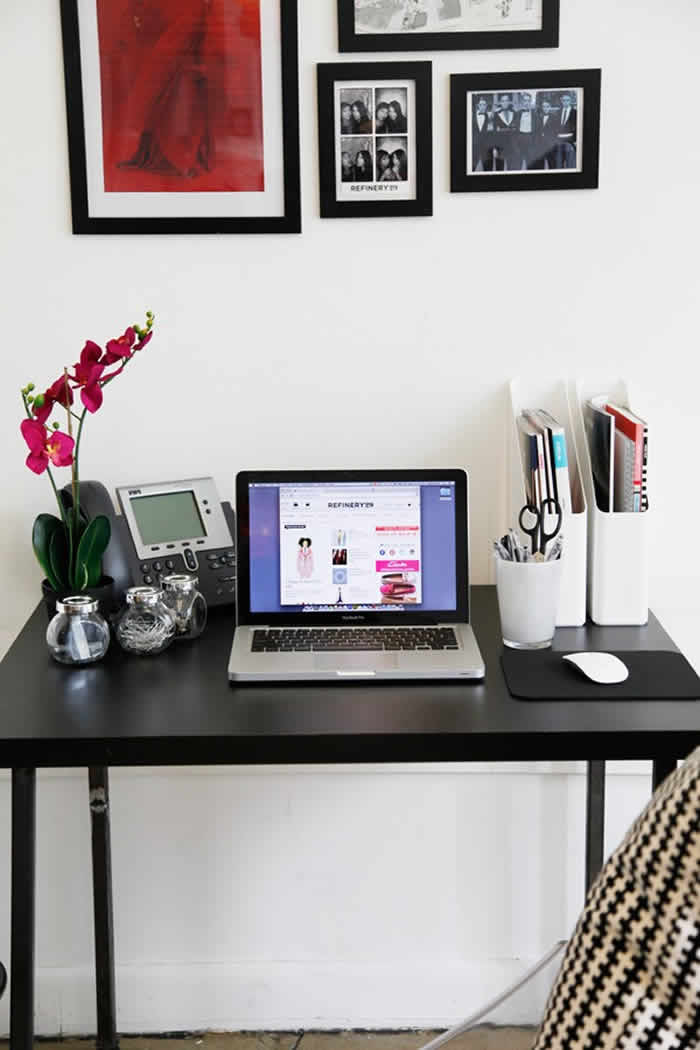
Unless you’re a designer who relies on a larger computer screen to complete their work, it’s worth switching to a trim laptop to create more desk space. In addition to leaving more room for you to spread out when working, laptops use eight times less power than desktops and will save on your electricity bill in the long run.
3) Organise loose stationery
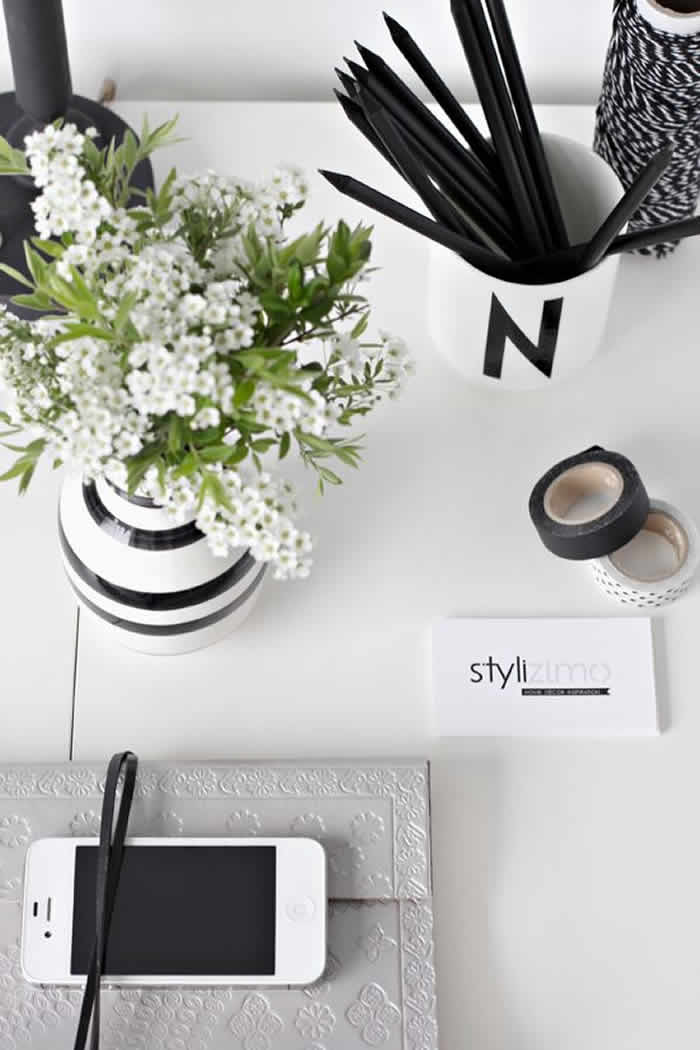
Anything that’s rolling around loosely on your desk is instantly going to make your home office look more cluttered, no matter how small it is. In addition, imagine how frustrating it will be when you’re trying to work with all of those pens and pencils getting in the way. Investing in a simple desk organiser can work wonders, and they’re available in a variety of styles to suit every kind of home office.
4) Tie up wiring

Loose wires can quickly get out of control and, as well as looking unsightly, can become a safety hazard. Tying them up, getting a desk that incorporates cable management, or strategically hiding wires behind things like bookshelves all work wonders.
5) Be brutal with what you throw out

Before you sit down to some serious work, take some time to walk around your office and discard every unnecessary item you can find. Throw away or shred unimportant documents, give old office décor you’re no longer fond of to a charity shop and put any stray food items back in the kitchen. Anything you don’t need while you’re working should be removed, which also goes for distractions. Game consoles and televisions have no place in a home office.
6) Prevent décor build up
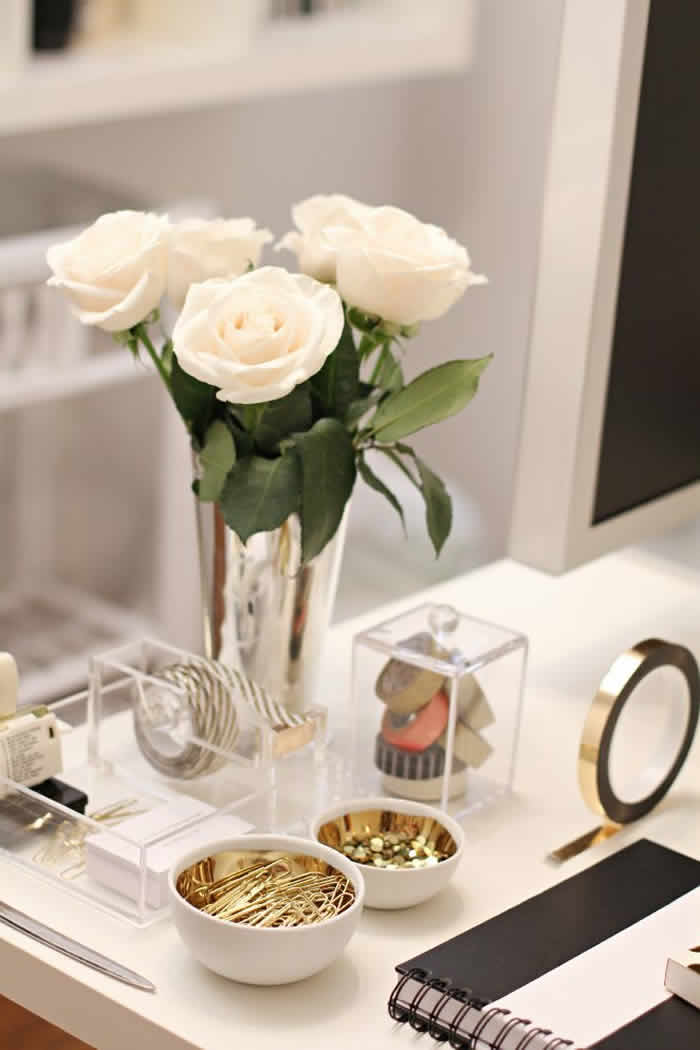
While throwing out old bits of paper and junk documents goes a long way in creating space, you shouldn’t neglect your office décor too. Designing a workspace at home is fun, and when something that’s completely you catches your eye in a shop, it can be difficult to pass it by. If you simply have to buy it, then get rid of something already in your office, and that you haven’t used or liked as much over the past six months to stop items building up.
7) Utilise wall space
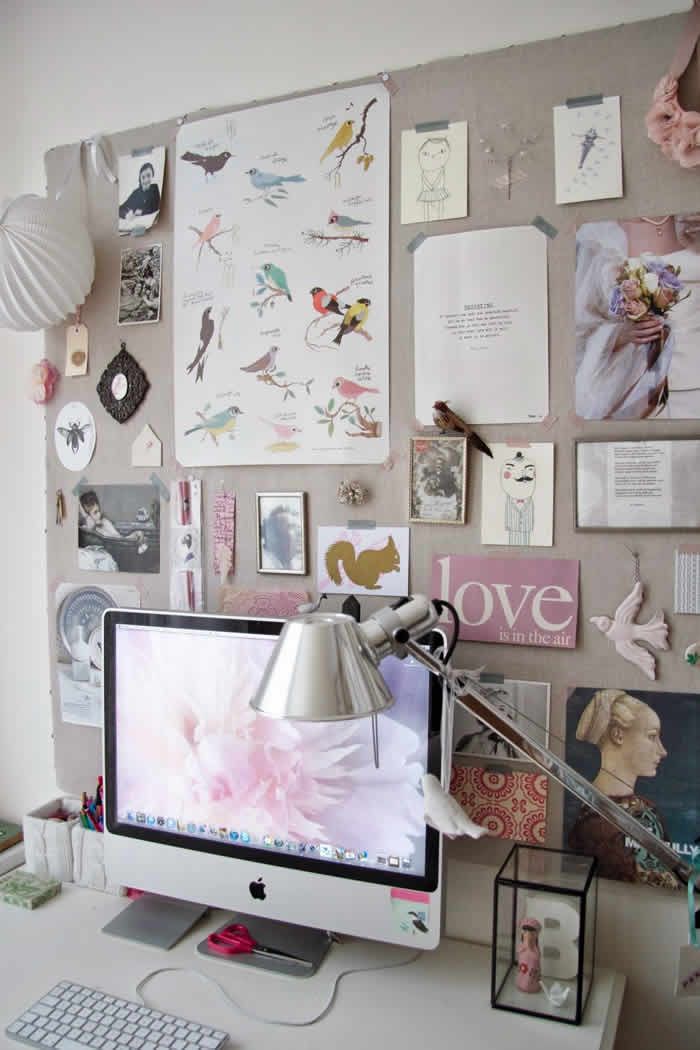
Not all clutter is rubbish, and sometimes you might not want to throw out all those inspiring magazine pages or images. So why not make a feature out of them? Creating a pin board or mural out of items like these is an increasingly popular trend, you can even pin important notes up there too to free up more desk space. In addition, go for tall bookcases, recessed shelving or floating shelves rather than wide storage to utilise an empty wall without taking up valuable floor space.
8) Decorate using neutral colours
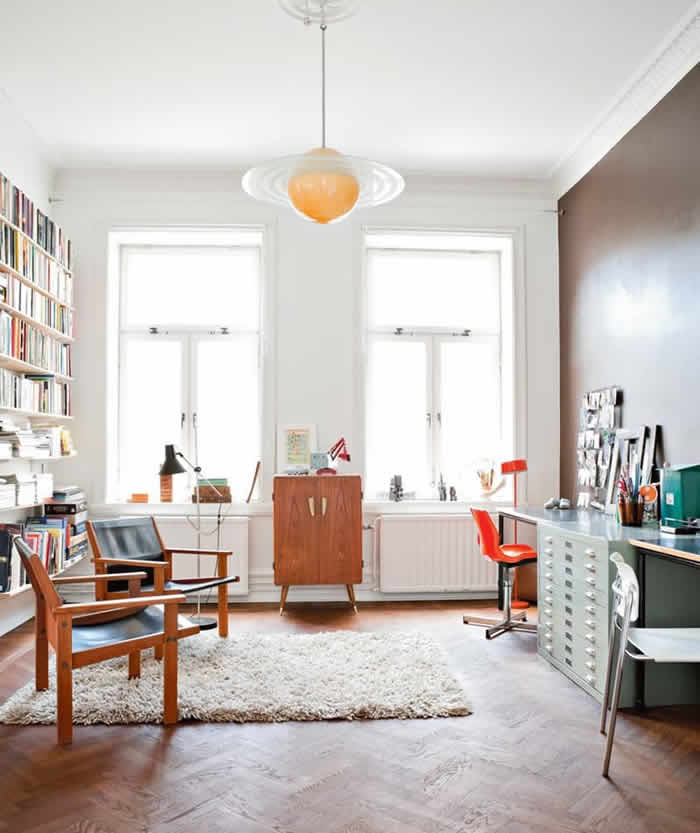
The shadows and atmosphere cast by dull and gloomy rooms doesn’t just impact your mood, but actually makes a home office appear smaller. Decorating in neutral colours is one of the best ways to open up a smaller space by reflecting natural light and making it appear brighter. This doesn’t mean you have to stick to white paint though – robin’s egg blue, light grey, beige, cream, pastel green and off-white all look great and are a subtle way to include more adventurous colours.
9) Don’t be tempted to over furnish
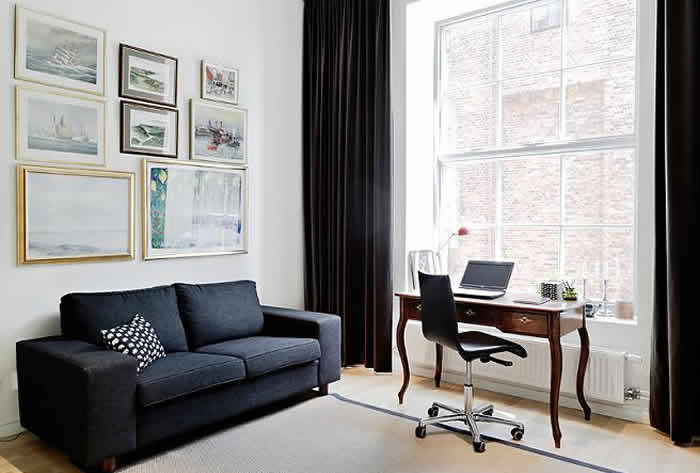
While the home offices featured on interior design blogs incorporate bookshelves, chairs, coffee tables and sofas to stunning effect, the reality is that many of these spaces are considerably larger than your average home office. While a home office does have to be as attractive as it is functional to make working in there enjoyable, over furnishing for stylistic reasons will only make the room feel claustrophobic. Plus, simply filling it with really essential furniture will look much more aesthetically pleasing than if it was full to bursting.
10) Keep the room single purpose
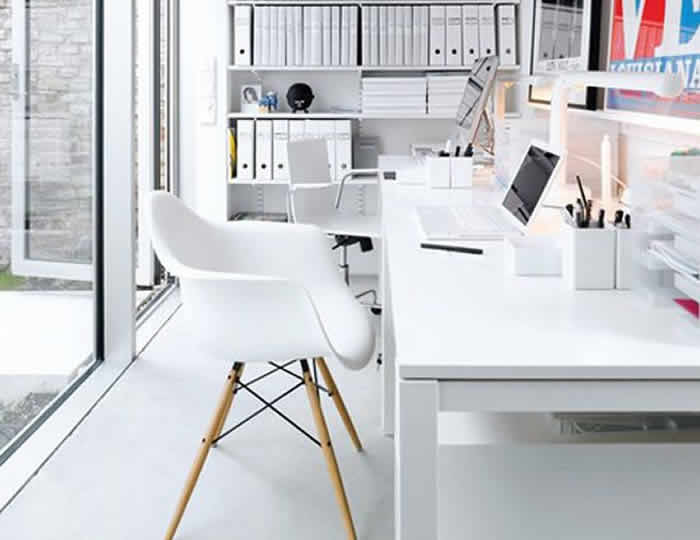
Your home office is for working in, so try not to let other areas of your life intrude. Deal with junk mail and bills in a separate room, keep out kids toys and dirty crockery and leave any leisure or “down time” items like televisions and books elsewhere. Once other areas of your life start creeping into your home office, it’ll quickly become disordered. -lifehack

